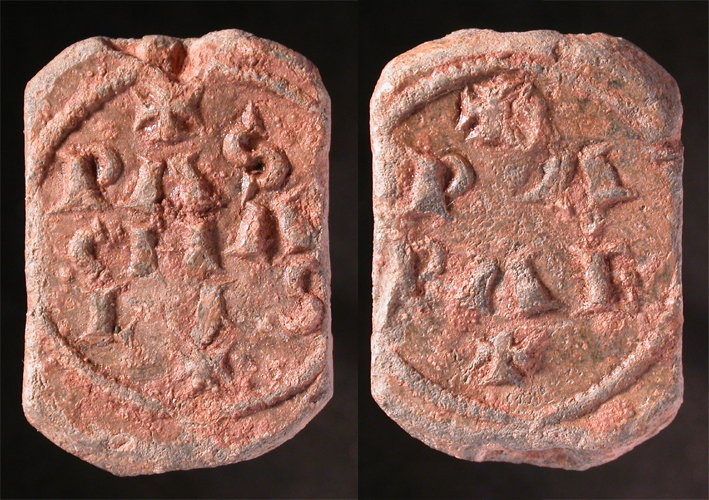File:Detailed image of Papal bulla of Paschal I 817-824 (FindID 69063).jpg
Page contents not supported in other languages.
Detailed_image_of_Papal_bulla_of_Paschal_I_817-824_(FindID_69063).jpg (709 × 500 pixels, file size: 462 KB, MIME type: image/jpeg)
| This is a file from the Wikimedia Commons. Information from its description page there is shown below. Commons is a freely licensed media file repository. You can help. |
Summary
| Detailed image of Papal bulla of Paschal I 817-824 | |||
|---|---|---|---|
| Photographer |
Birmingham Museums Trust, Peter Reavill, 2004-08-26 10:11:56 |
||
| Title |
Detailed image of Papal bulla of Paschal I 817-824 |
||
| Description |
English: Cast lead or lead alloy Papal Bulla of Pope Paschal I of early medieval date (817 – 824). The bulla is sub-rectangular (rectangular with rounded corners) in plan and rectangular in cross section. It measures 32.5mm in length, 22.9mm width, and is 5.6mm thick. It weighs 28.912g (1.0198oz or 446.17 grains). Both the left and right edges of the bulla have been clipped or trimmed, however, this clipping respects the central inscriptions on both faces. Both edges have an even patina which matches the rest of the bulla. This suggests that this damage occurred in antiquity probably before deposition.It is not inconceivable that the reuse of a papal bull seal as a weight in the Late Anglo-Saxon period was not just using a convenient piece of lead, but tapping into the notion of official weights bearing designs. This does not mean that the reuse of a bulla was somehow creating a fraudulent weight (indeed this seems unlikely given its weight also being so close to the 1oz mark) but that it might simply have looked like a ‘proper’ weight. |
||
| Depicted place | (County of findspot) County of Herefordshire | ||
| Date | between 817 and 824 | ||
| Accession number |
FindID: 69063 Old ref: HESH-ADE183 Filename: HESH-ADE183 - detail.jpg |
||
| Credit line |
|
||
| Source |
https://finds.org.uk/database/ajax/download/id/34691 Catalog: https://finds.org.uk/database/images/image/id/34691/recordtype/artefacts archive copy at the Wayback Machine Artefact: https://finds.org.uk/database/artefacts/record/id/69063 |
||
| Permission (Reusing this file) |
Attribution-ShareAlike License | ||
| Other versions |
|
||
Licensing
This file is licensed under the Creative Commons Attribution-Share Alike 2.0 Generic license.
Attribution: The Portable Antiquities Scheme/ The Trustees of the British Museum
- You are free:
- to share – to copy, distribute and transmit the work
- to remix – to adapt the work
- Under the following conditions:
- attribution – You must give appropriate credit, provide a link to the license, and indicate if changes were made. You may do so in any reasonable manner, but not in any way that suggests the licensor endorses you or your use.
- share alike – If you remix, transform, or build upon the material, you must distribute your contributions under the same or compatible license as the original.
Captions
Add a one-line explanation of what this file represents
Items portrayed in this file
depicts
File history
Click on a date/time to view the file as it appeared at that time.
| Date/Time | Thumbnail | Dimensions | User | Comment | |
|---|---|---|---|---|---|
| current | 12:39, 1 February 2017 |  | 709 × 500 (462 KB) | Fæ | Portable Antiquities Scheme, HESH, FindID: 69063, early medieval, page 1676, batch direction-asc count 10226 |
File usage
The following pages on the English Wikipedia use this file (pages on other projects are not listed):




